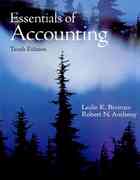Question
A historical analysis of the Australian market for cars : Australia imports cars. These days we don't produce any of our own, but we did
A historical analysis of the Australian market for cars: Australia imports cars. These days we don't produce any of our own, but we did historically. We still could produce cars here (should we?) but over time we've become out-competed by manufacturers in other countries who can do it more efficiently (read: at lower cost) than we can. Back in the 1980s Australia still had a car manufacturing industry, but it was becoming difficult to compete with manufacturers from other countries. In order to help the local manufacturers, the Australian government imposed a tariff on imported cars at around 50%. Let's time-travel back to the 1980s to look at the market for mid-size cars in Australia.
- * First, imagine a situation where Australia is self-sufficient in the manufacturing of cars, and draw a standard illustrative market model (no numbers) for mid-sized cars in Australia, without any trade (i.e. a closed economy model). Identify the domestic equilibrium price, quantity supplied and consumed, and consumer and producer surplus.
- * Now consider what happens if we allow for international trade, assuming this would lead us to become a net importer of cars. In your diagram, show how this will affect the quantity supplied and consumed domestically, and how this will affect the welfare of domestic producers and consumers. How does it affect the economy overall?
- **Now, add a tariff into the model. Show how this affects the quantities of cars produced and consumed domestically, and traded. Show how this affects welfare (i.e. surplus enjoyed by all domestic market participants). What might have been the economic rationale for imposing a tariff? Do you think it was justified?
- ***Finally, we will add some numbers to make this a hypothetical quantitative exercise. Let's assume the demand and supply functions for mid-sized cars in Australia was given by:
QD = 100,000 - 5P
QS = 10P - 50,000
If the world price for a mid-sized car was $6,000, calculate the total surplus under (i) no trade; (ii) trade but no tariff; and (iii) trade with a $2,000 tariff placed on each car. What would have been the value of international trade to the Australian economy under scenario (ii) versus (i)? What is the government revenue earned from the tariff under scenario (iii)? What would be the size of the deadweight loss from this tariff compared to trade without tariff (if any)?
Step by Step Solution
There are 3 Steps involved in it
Step: 1

Get Instant Access to Expert-Tailored Solutions
See step-by-step solutions with expert insights and AI powered tools for academic success
Step: 2

Step: 3

Ace Your Homework with AI
Get the answers you need in no time with our AI-driven, step-by-step assistance
Get Started


